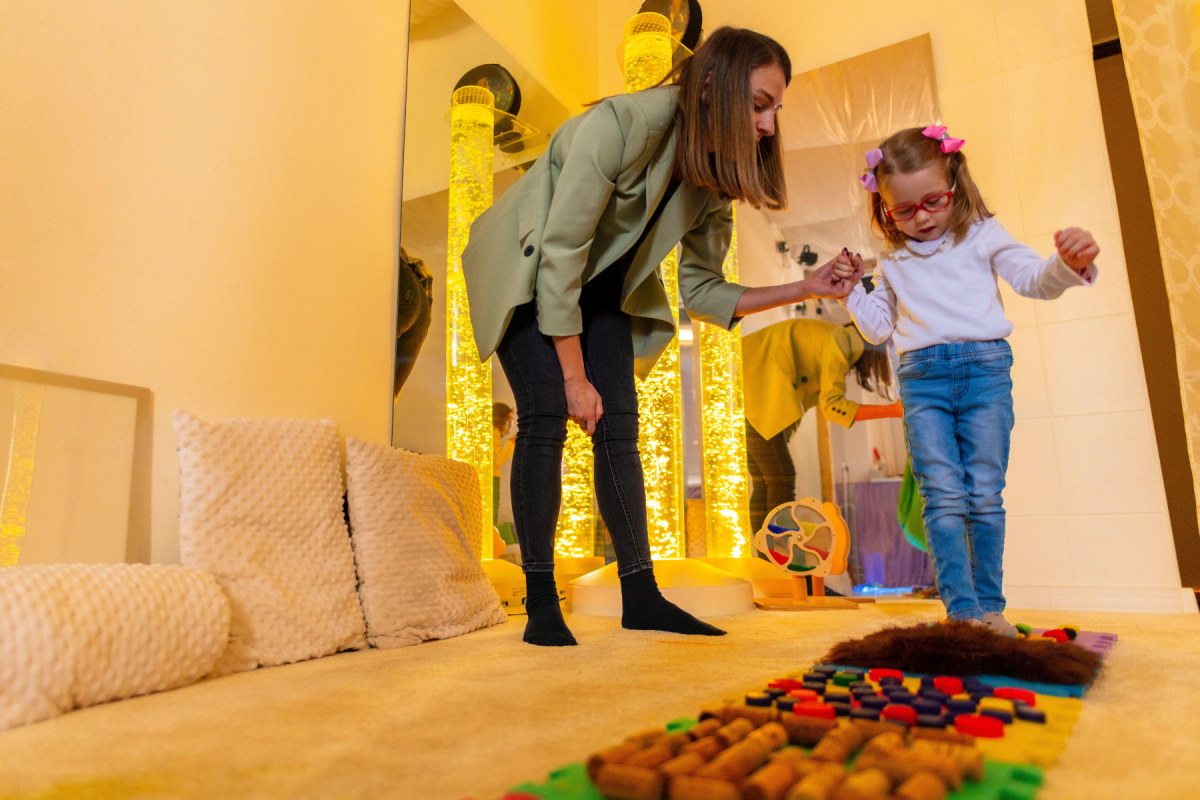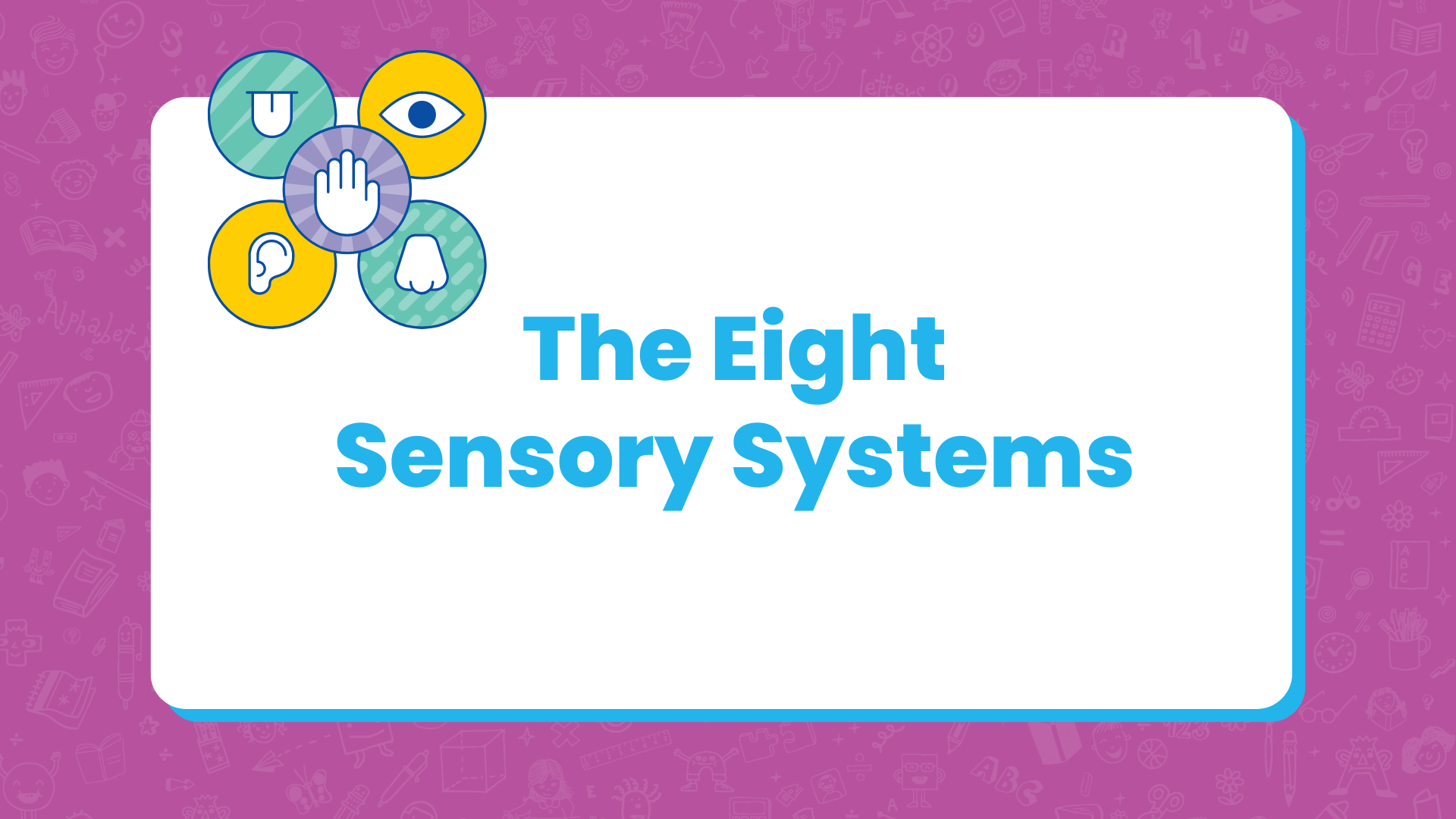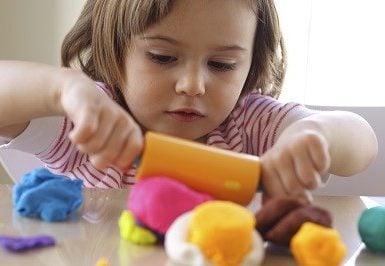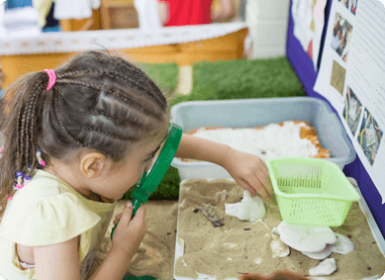Understanding the Eight Sensory Systems
While most people are familiar with the five senses – sight, hearing, taste, smell and touch – there are actually three more “hidden senses”: vestibular (balance), proprioceptive (body position) and interoceptive (internal feelings). These eight sensory systems all work together to help us make sense of our world and form the foundation for how children learn.
What are the Eight Sensory Systems
Each of our eight sensory systems has a different role in helping us understand our environment and bodies and in protecting us from potential dangers. For children, these sensory systems play a crucial role in their social and emotional development and learning. Learn more about the role of each of our sensory systems:
Visual System (Sight)
The visual system, or the sense of sight, helps us process visual information such as colour, shapes, patterns and contrast through visual receptors in the eye. It also helps to perceive depth and track movement with our eyes.
Auditory System (Hearing)
Our auditory system, or our sense of hearing, helps us process the different qualities of sounds such as volume, pitch, tone and rhythm through receptors in the ear. This sensory system also helps us give meaning to sounds such as identifying whether the sound is spoken words, music or background noise to be filtered out.
Tactile System (Touch)
The tactile system, or our sense of touch, gives us information through receptors on the skin about texture, temperature, pressure and pain. This sense helps us
Gustatory System (Taste)
The gustatory system, or our sense of taste, helps us to process different flavours and textures through the receptors on the tongue and inside the mouth. This sensory system helps us to distinguish between the different types of taste – sweet, sour, salty, bitter and umami – and can also provide important clues about whether something is safe to eat.
Olfactory System (Smell)
Our olfactory system, or sense of smell, provides us with information about different scents and odours in the environment.
Vestibular System (Balance and Movement)
The vestibular system is located in our inner ear structures and helps us process balance and movement. This “hidden” sensory system tells us about the speed, direction and rotation of movement as well as our head position to keep our bodies upright when sitting, standing or walking.
Proprioceptive System (Body Position)
The proprioceptive system is another “hidden sense” located in our muscles and joints. This sensory system is sometimes referred to as “body awareness” and tells us about the position and orientation of our body parts without looking or touching as well as the rate, speed, force and timing of our movement. We use this sense to control movements when performing specific tasks.
Interoceptive System (Internal Sensations)
The final “hidden sense” is our interoceptive system, which uses signals from our internal organs to help us recognise internal feelings like hunger, thirst, temperature, nausea, heartbeat and the need for the toilet. This sensory system can also provide important clues about our emotional state.
How Our Eight Senses Affect Learning
All children process sensory information differently, which shapes their experience with learning. A group of children may all be in the same classroom but their experience of that learning environment will be different because of the unique way their eight sensory systems are working together to process all the information around them.
When a child enters a classroom, they aren’t just sitting down and listening to their teacher – they’re taking in the colours of items around the classroom, the feel of their uniform, the sounds of students outside the classroom and so much more.
The eight sensory systems can each affect learning in different ways:
The role of the visual system
Children use their visual system all the time in the classroom. This sensory system helps children make sense of what they’re seeing such a:
- recognising symbols like numbers and letters for reading and mathematics
- Identifying different colours and patterns to interpret pictures and objects
- distinguishing between size, shape and distance to understand their environment
While this type of visual information is important for learning, some visual information can also get in the way of learning. For example, a classroom that is full of vibrantly coloured and busy posters or decorations may make it harder for some students to focus on the visual information that’s important.
Some children may have more difficulty with visual processing than others, which can make tasks like copying from the board and keeping their place when reading more challenging.
The role of the auditory system
The classroom and playground provide lots of auditory input throughout the day. The auditory system helps children to distinguish between different sounds and make meaning from those sounds. This sensory system plays an important role in many learning tasks including:
- Understanding the letter-sound relationships to learn how to read (phonics)
- Developing oral language skills including vocabulary, syntax (sentence structure) and pragmatics (social language)
- Following instructions from the teacher to complete learning activities correctly
- Understanding what others are saying (listening comprehension)
Background noise such as other students walking and talking outside the classroom or tapping a pencil on a desk can make it hard for any student to concentrate on learning but particularly those with auditory processing difficulties.
The role of the tactile system
The tactile system is taking in sensations constantly as our skin covers our whole body. Because this sensory system is taking in so much information, it can support learning in many ways. Activities like handwriting, craft, and using manipulatives in maths all rely on tactile input. This tactile input can support memory of different processes and can help children to consolidate their learning.
While the sense of touch can support learning, it can also serve as a distraction or barrier, particularly for children who are sensitive to tactile input. For example, the material of a child’s school uniform or uniform tags may feel scratchy against their skin or the shape and texture of their pencils and pens may feel uncomfortable against their fingers, making it difficult to engage fully in learning.
The role of the gustatory system
The gustatory system plays an important role in early childhood education, where children use their mouths to explore and learn about new objects and the world around them. As children enter primary school, the sense of taste may become less directly involved in learning but can affect a child’s mealtime experiences at recess and lunch. Eating a substantial and nutritious meal helps students maintain focus throughout the school day. If students don’t eat enough due to negative experiences with the taste and texture of food, they may become more distractible and less able to regulate emotions, which can affect their engagement in the classroom.
The role of the olfactory system
The olfactory system plays an important role in safety and is the only sensation we cannot filter out. This means that all smells, whether it’s the enticing smell of food from the canteen or the musty smell of wet clothes after rain, can act as a distraction to children’s learning. Since children aren’t able to filter out strong smells, it’s important to keep the classroom as odour neutral as possible to support engagement.
The role of the vestibular system
The vestibular system may be hidden but it’s hard at work in the classroom and the playground. This sensory system helps children navigate stairs and playground equipment and coordinate eye movements for reading and following teacher instructions.
The role of the proprioceptive system
The proprioceptive system plays an important role in emotional regulation, concentration and motor control. This sensory system helps children to hold an upright sitting posture when seated at a desk, put the right amount of pressure on a pencil or pen when writing and plan out the movements needed to complete a task. Activities that provide proprioceptive input such as pushing, pulling or lifting can help children to feel calm and focused, which sets them up for learning tasks.
The role of the interoceptive system
For children to be focused and ready to learn, they need to be able to identify internal signals and make adjustments to regulate what’s happening inside their bodies. This means managing changes in emotions, hunger, thirst, the need to toilet and temperature so they are able to concentrate fully on their learning.





